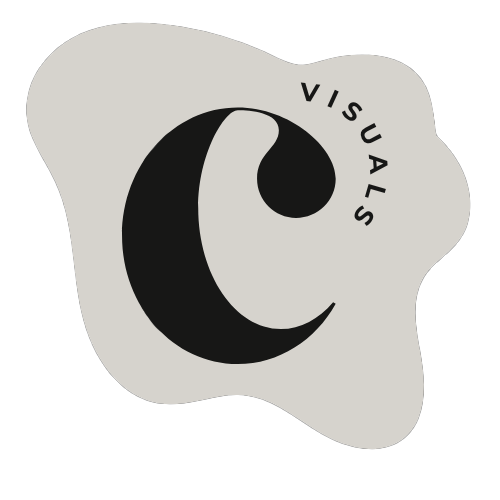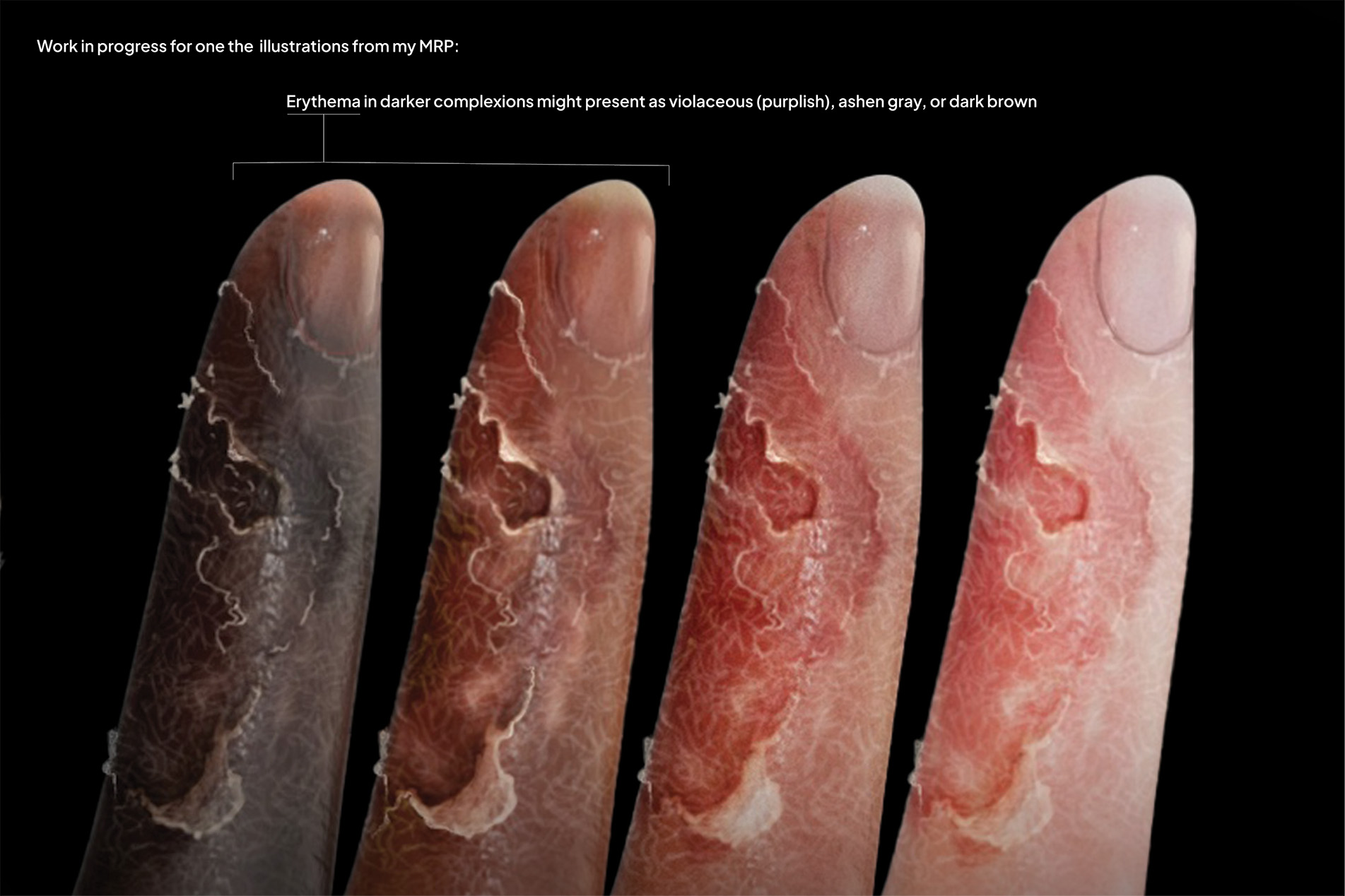
Master Research Project (in progress)
TONO: Visualizing Eczema in Every Skintone
TONO is a web-based reference atlas designed to improve how eczema is identified across all skin tones. As part of my Master's Research Project in Biomedical Communications, I pitched TONO to address the lack of diverse visual resources.
A need for dermatological examples of skin of color
Currently, there is a lack of visual references that accurately depict dermatological conditions on diverse skin tones. This gap can lead to misdiagnosis or delayed treatment for patients with skin of color. TONO aims to address this issue by providing a comprehensive and inclusive visual resource of eczema for healthcare professionals.
why illustrations if we have photos?
Illustrated images offer more control than photographs with consistent lighting, pose, and severity across skin tones. This makes clinical features like erythema or scaling easier to see. Showing the same image of the condition across different tones also helps highlight how presentations can vary by allowing for direct comparison. Since images of skin of color are often underrepresented in clinical references, illustration helps fill that critical gap.
Audience
Audience: Primary Care Physicians and Internal Medicine Residents.
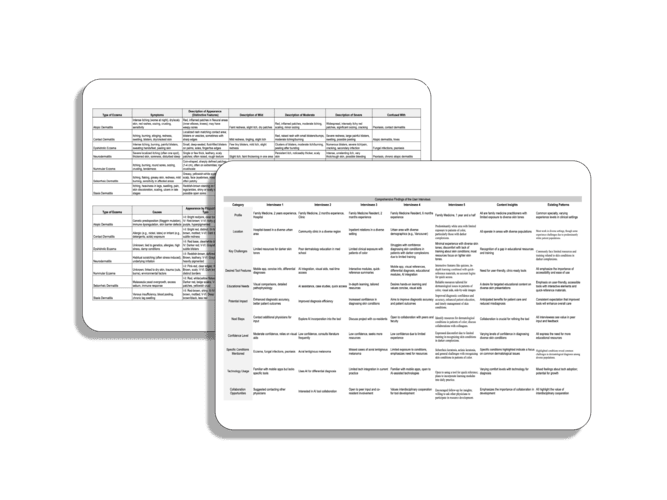
Workflow

What will TONO cover?
Tono will include a seven types of eczema, such as:
A look into the Visual Process
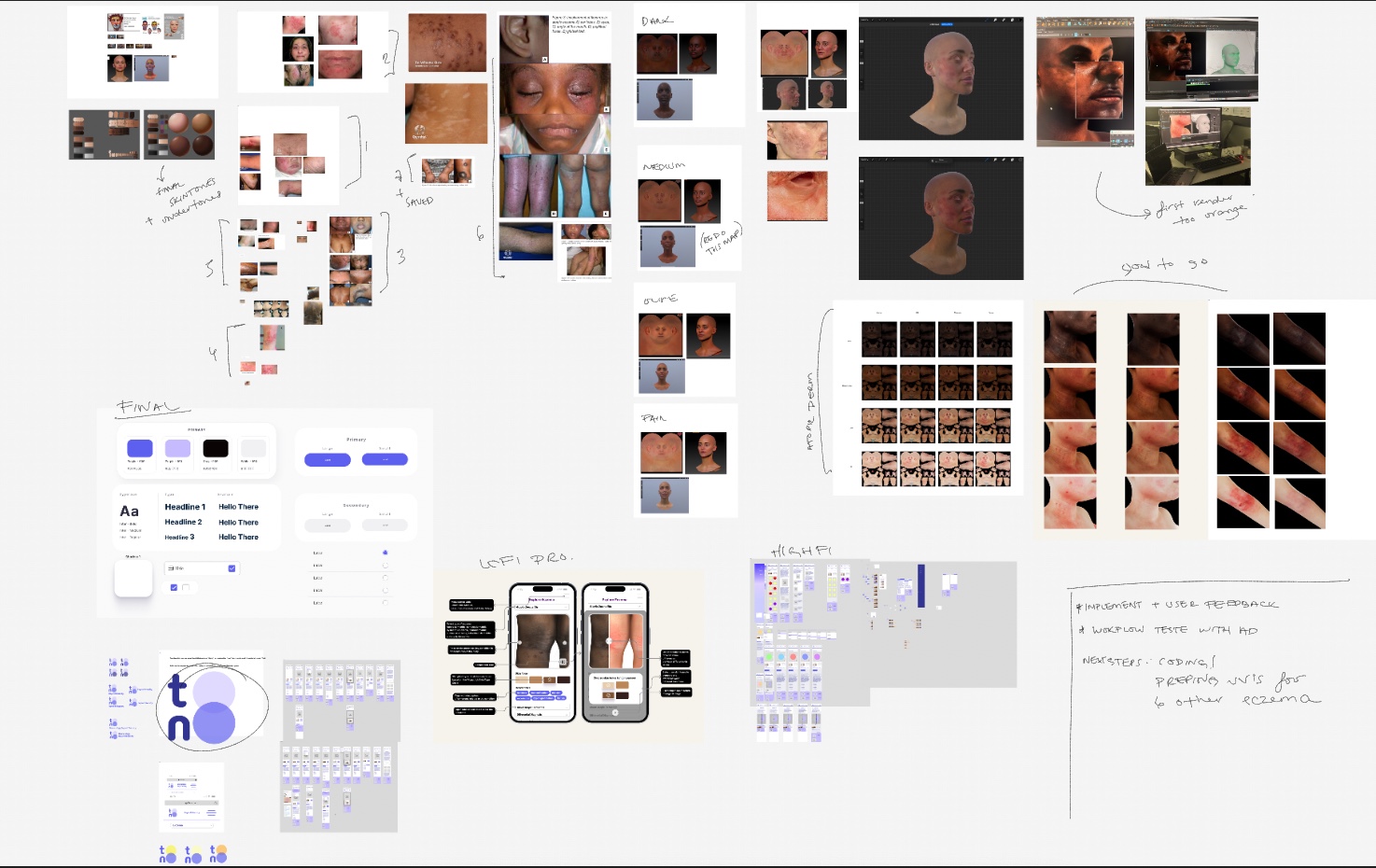
UV Maps
Using a 3D Model, I created variations of the original UV maps. The original was the "fair skintone". I created three variants of deeper skintones ensuring consistency across all images, and a realistic portrayal of the skin.
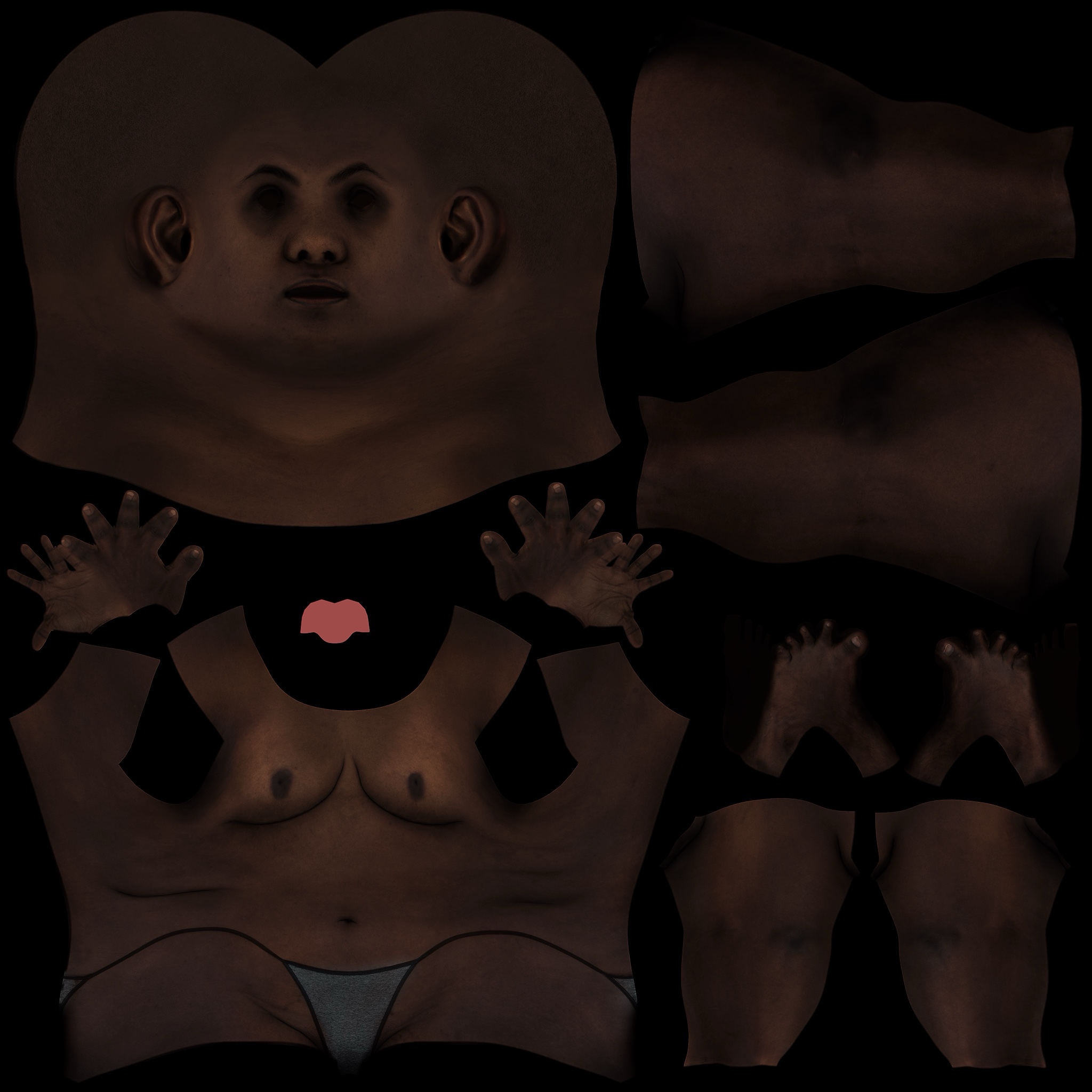
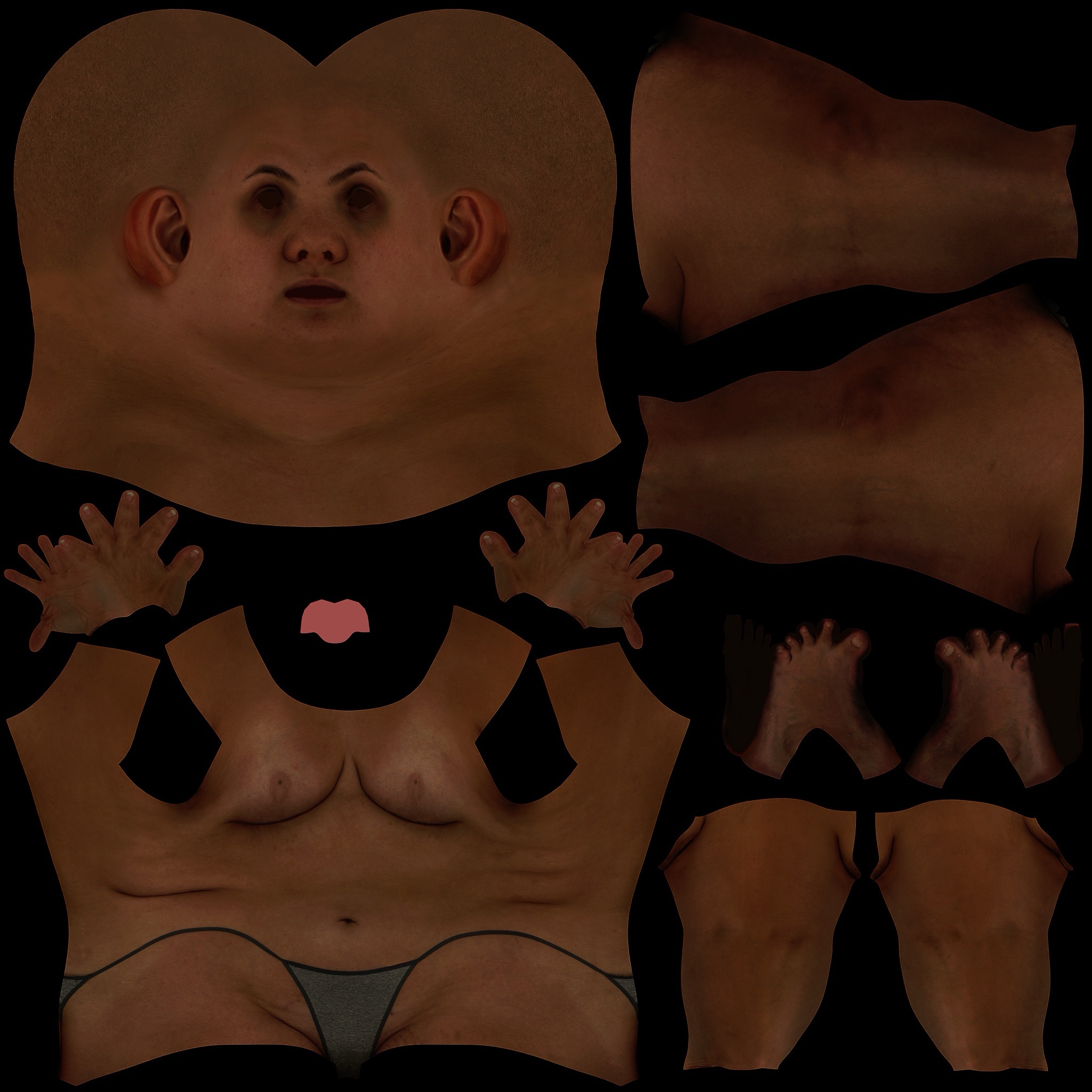
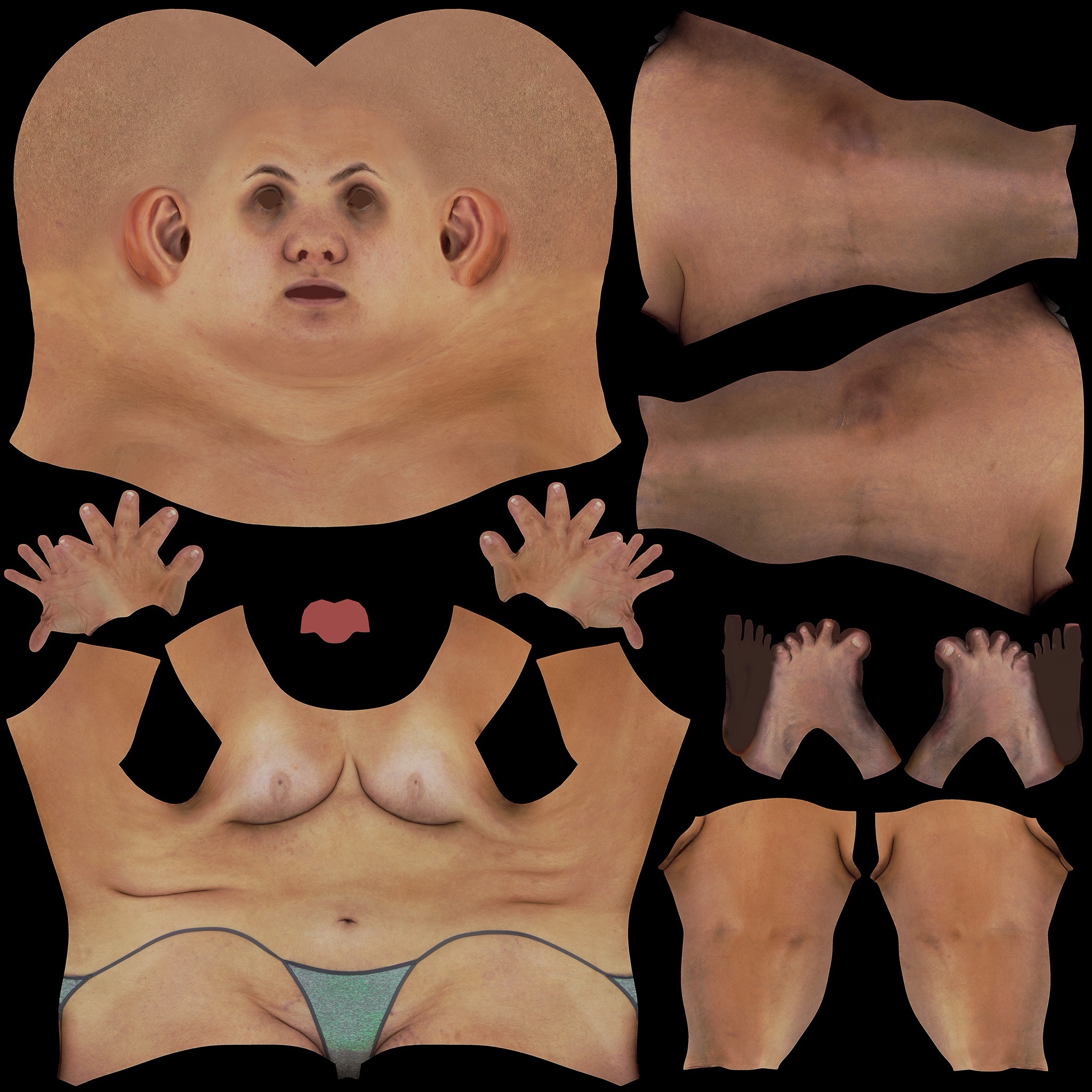
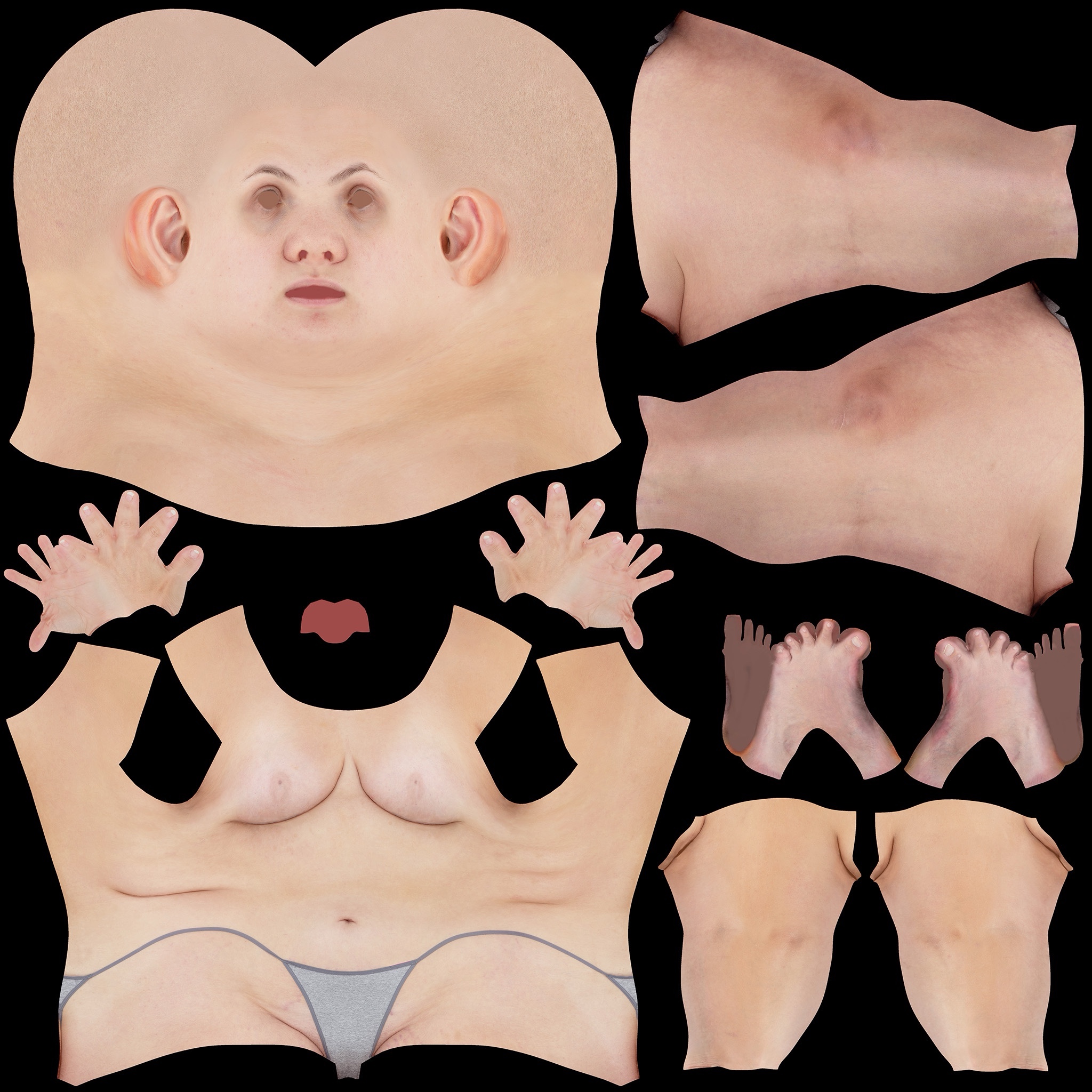
Prep for Rendering
I import my UV maps (which serve as the base for each eczema condition I’ve drawn in Procreate ) and apply them to the model. I use the Remap Value node in the Hypershade to fine-tune visual aspects like body roughness. Once everything is calibrated, I render out the images.
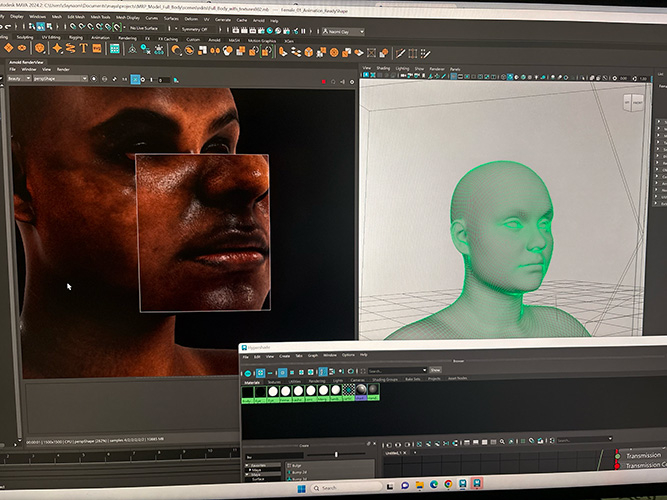
Finetuning in Procreate
After rendering, I bring the images into Procreate and draw the eczema symptoms directly onto the skin. This phase focuses on clearly visualizing features like erythema, peeling, and thickening, while making sure they’re accurate and consistent across all skin tones.
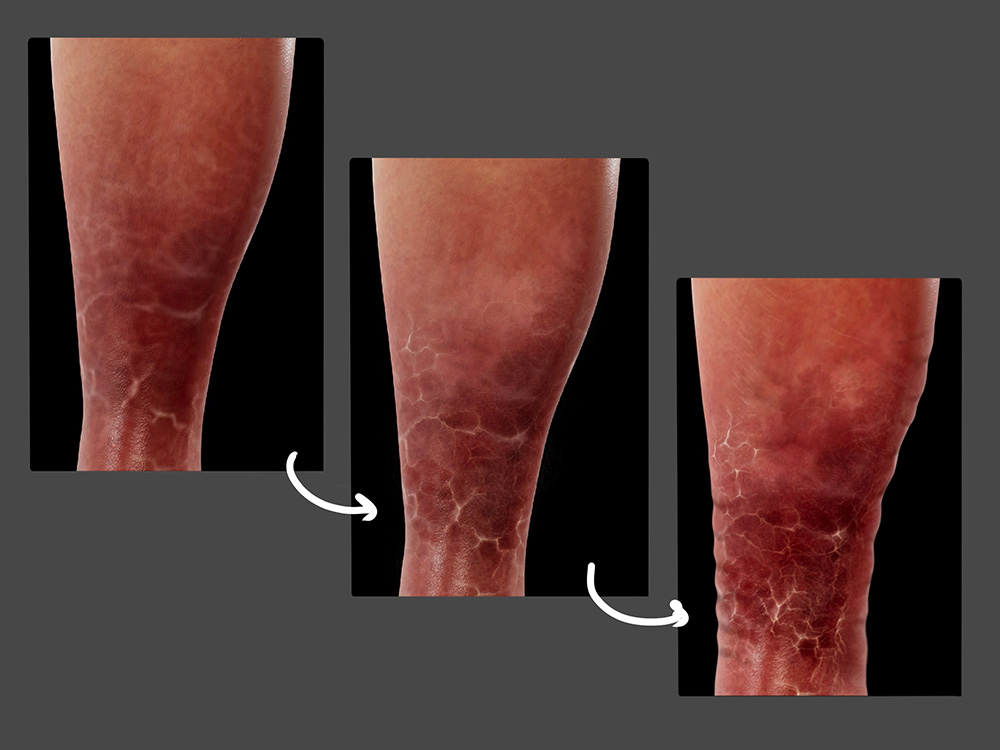
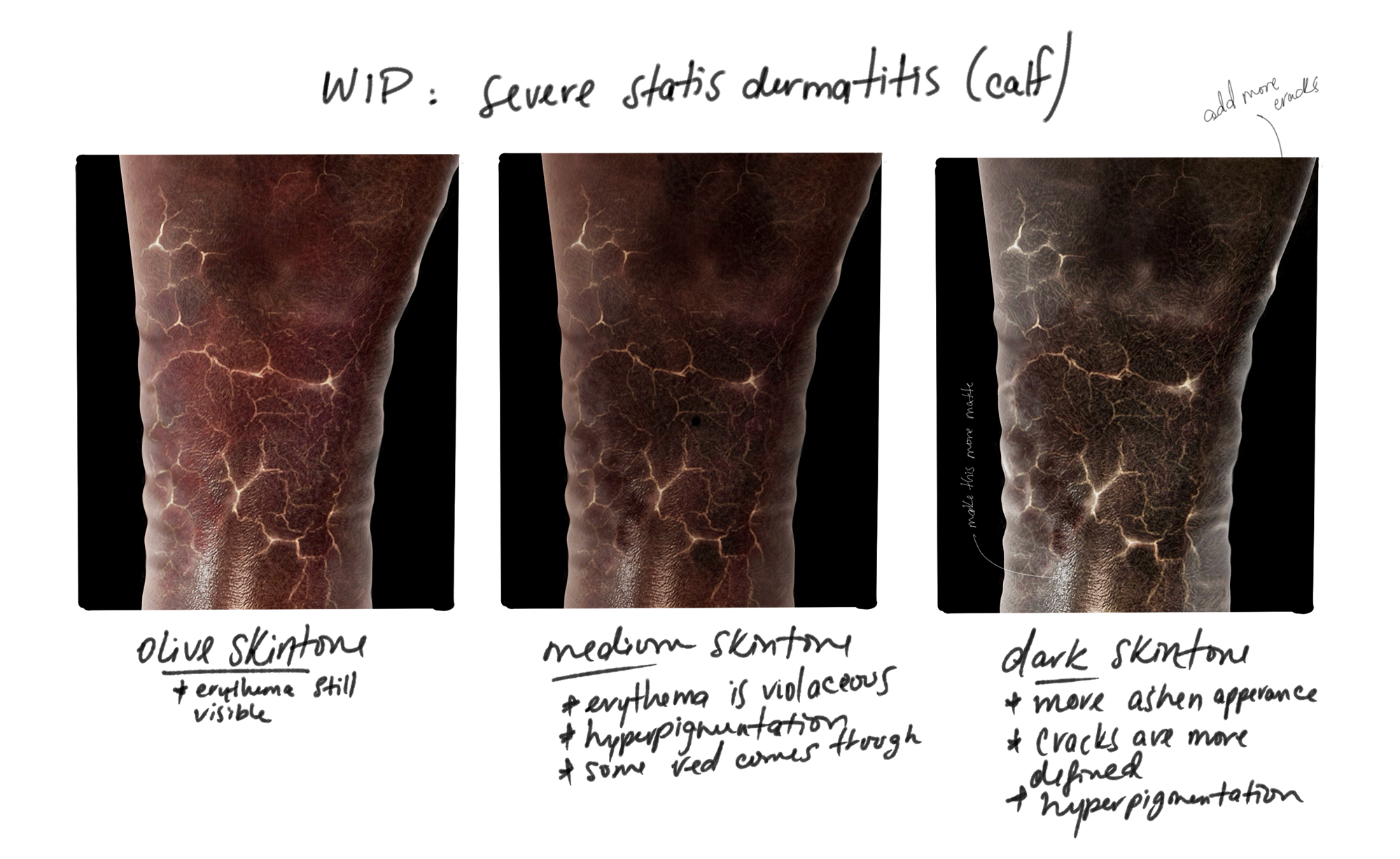
Goal: Realistic Detail + Clear images
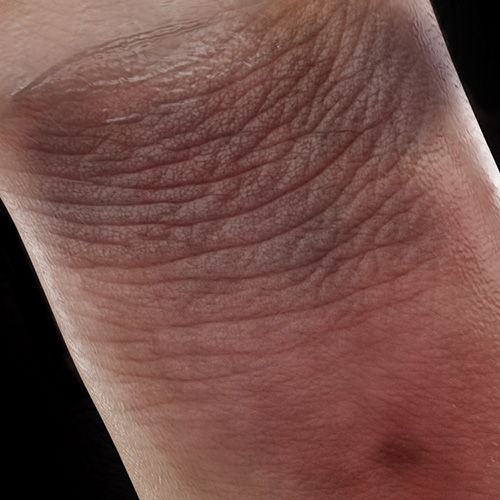
This image is an example of mild to moderate lichenification. My goal across all conditions is to capture realistic skin detail while clearly showing key features like texture, scaling, and discoloration. This balance helps ensure that clinical signs are recognizable and consistent across all skin tones. Creating images doctors can easily reference.
TONO will have a total of 224 images available for Medical Practitioners to reference.
